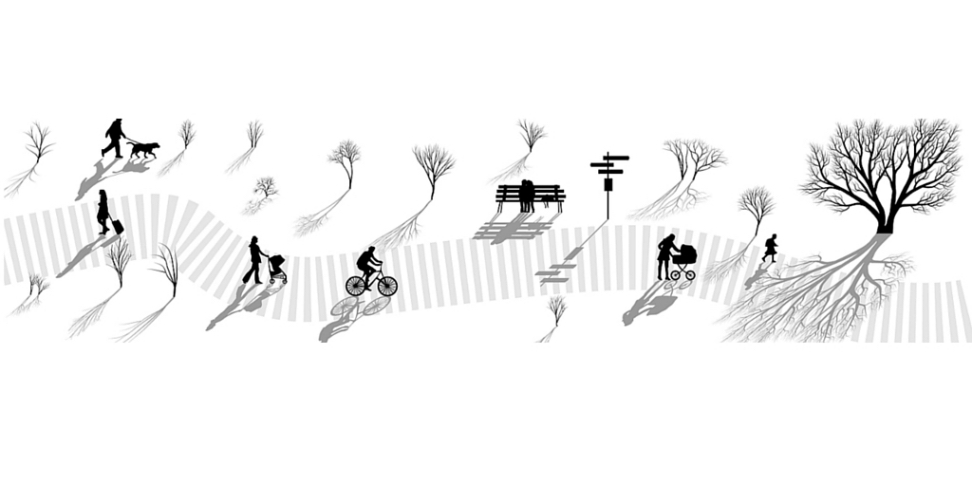Emerging cityscapes in the next ten years
Hunome has kept me very busy. When Frank at KedgeForward asked me to contribute an article it was a neat little break from the 'on the business' and 'in the business' and have a moment to think about one major aspect of our human condition. I wrote a think piece on the emerging cityscape. My article is the second one on the page. The great thing about KedgeForward's approach is that they take in all the articles at once and release them in pairs that look at the topic from different angles or even have a totally opposite view. You judge how me and my pair Chris Barnatt are positioned.
Here is the full text for convenience:
“Economy and politics have been the emphasis in shaping our cities over the last century. Economy was in focus to spin the wheels of the industrial revolution and a necessity for the speedy rebuild after the wars. Politics was in focus as ‘social capitalism’ to deliver otherwise unattainable services, a modern version of the utilitarian statement “greatest good for the greatest number of people”, with some vacillation in that intent in both directions, extreme capital and extreme social, somewhere along the century. This has created megacities in the service of finance, industry and government. The focus lifted many from poverty to middle class and beyond. That was then. Now I see us moving on.
I think during this century and decade we will add to the mix more of the social (meaning pleasing to human life and interaction), technological and environmental aspects for a better cityscape. Cost, pollution, traffic, stress (raging people) and perhaps a lack of sense of a community and even partly our obesity and diabetes issues are some of the downsides of living in big cities and the structures that go with it.
Cities still provide services, which would be hard or impossible to distribute to many locations due to expensive equipment or rare talent. So what difference does this emphasis shift make to the, mainly developed area, cities?
Some responses to these issues that I have experienced around the globe are: developing smaller city centers within the large cities, making way for green public areas, constructing with more space and aesthetic value, increasing small mass transport solutions and human powered means to get around as well as increasing the services that allow people to meaningfully get together.
One expressed wish is to bring the country closer to the cities for better access to fresh and quality food. Today our food does acrobatics around the globe to get to the mouths of the people. We are living in a phase of centralization of distribution gone mad. What would those aliens say about us if they were observing how our stuff is moved around?
Some of the essential elements for shaping our cityscape is that people can establish relatively small scale businesses and activities with the help of funding, if necessary, and with politics supporting or at least not getting in the way, e.g., car spaces for renting a local car or pick-up space for motorized rickshaws and so on. These novel cottage industries are required for moving cities nimbly in the direction of what people want more of in their lives.
I also think that honoring what went before is an important aspect of our emerging cityscape and our sense of belonging to it. We cherish heritage, well perhaps not some of the 70s developments. There is a lot that can be done with heritage, the worn out or some quirky ideas; an example of this are boutique hotels like Dasparkhotel in Linz, Austria. The ‘hotel’ offers three rooms in three drainpipes in a public park. You name the price.
One could go as far back as asking the question, why are we in cities? Some of the fundamental reasons involve security, services, marketplaces and social constructs for varying pursuits beyond our daily existence. It is not hard to see that there is a change trajectory happening in most of the key benefits to living in a city.
Security has shifted from large cities to smaller cities and communities, for many reasons. Many services can now be delivered anywhere. Some difficult exceptions are for example infrastructures for remote areas and quick access to leading health care. Fresh and local goods are best delivered in smaller communities. The tricky thing about social activities in smaller communities is that they may not cater for the needs of the variety of humanity. This is better in larger cities. Of course there is always the Internet.
An Internet oriented existence is lifting the need to work or be educated in a city. There is less need for major investments, many people to form a meaningful company or overheads. Those involved in this shift can find the community that best suits them as people and live happily ever after. However, we are still not convinced that key meetings can be held at a distance.
I don’t think we need to be fooled by Maslow’s hierarchy of needs to understand that it does not matter how poor a person is or how little food one has we want a range of these elements in our lives.
We must recognize that ten years is not a long time. We struggle with our busipolitico models for large-scale change. Actions that agile and purposeful decision-makers take highlight aspects of those models as irrelevant or even hostile to humanity.
Individual ingenuity can win over these issues. Individuals, small businesses and agile organizations shape emergent cities for the benefit of the shifting acceptance and mood of people. This caters for the short and long-term motivations of those who do; for the benefit of humanity and the pocket book of those who act for the newly hatched human 2.0. I think that while there are difficulties in this journey we are going in a good direction.”
My tweets
Posts on…





